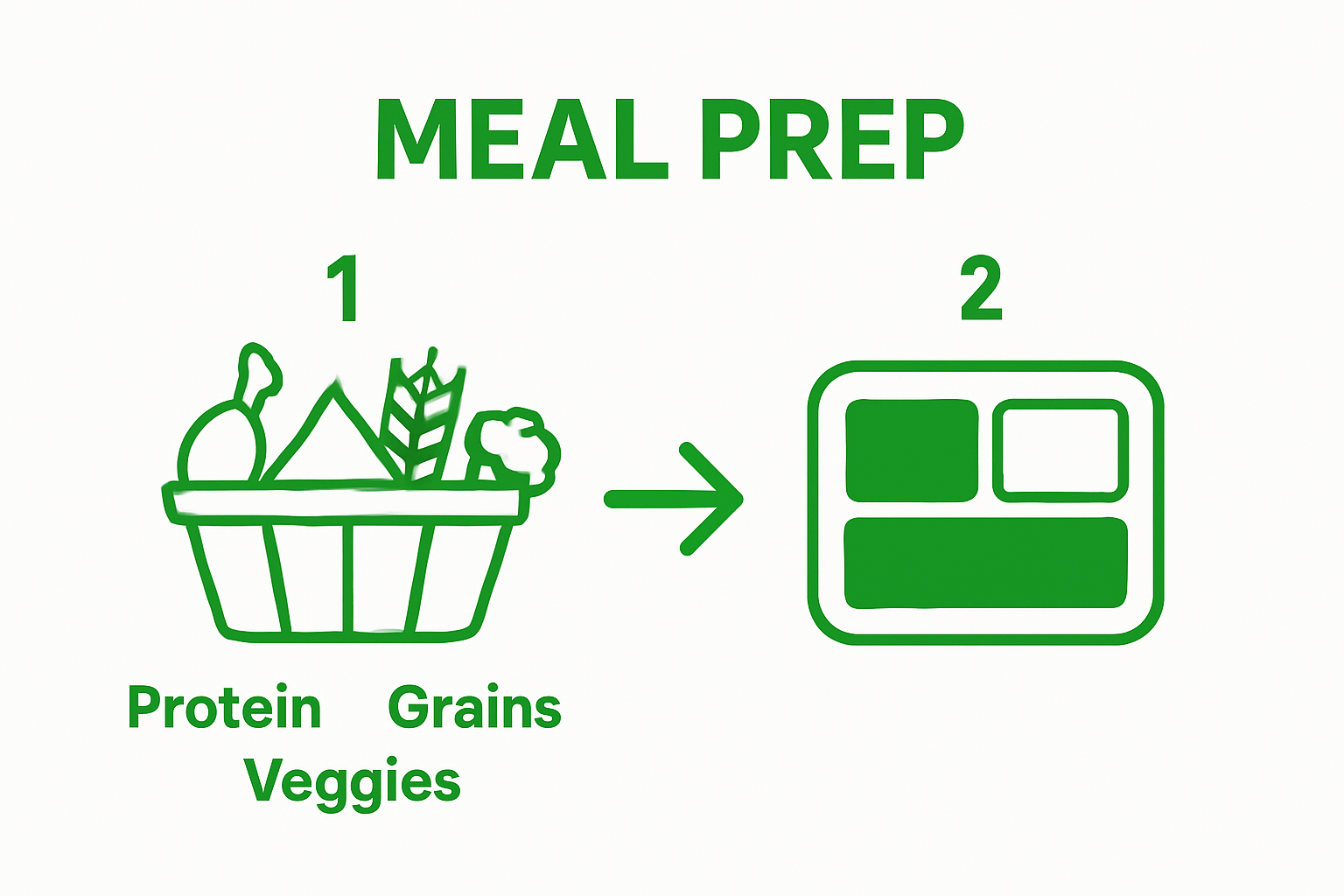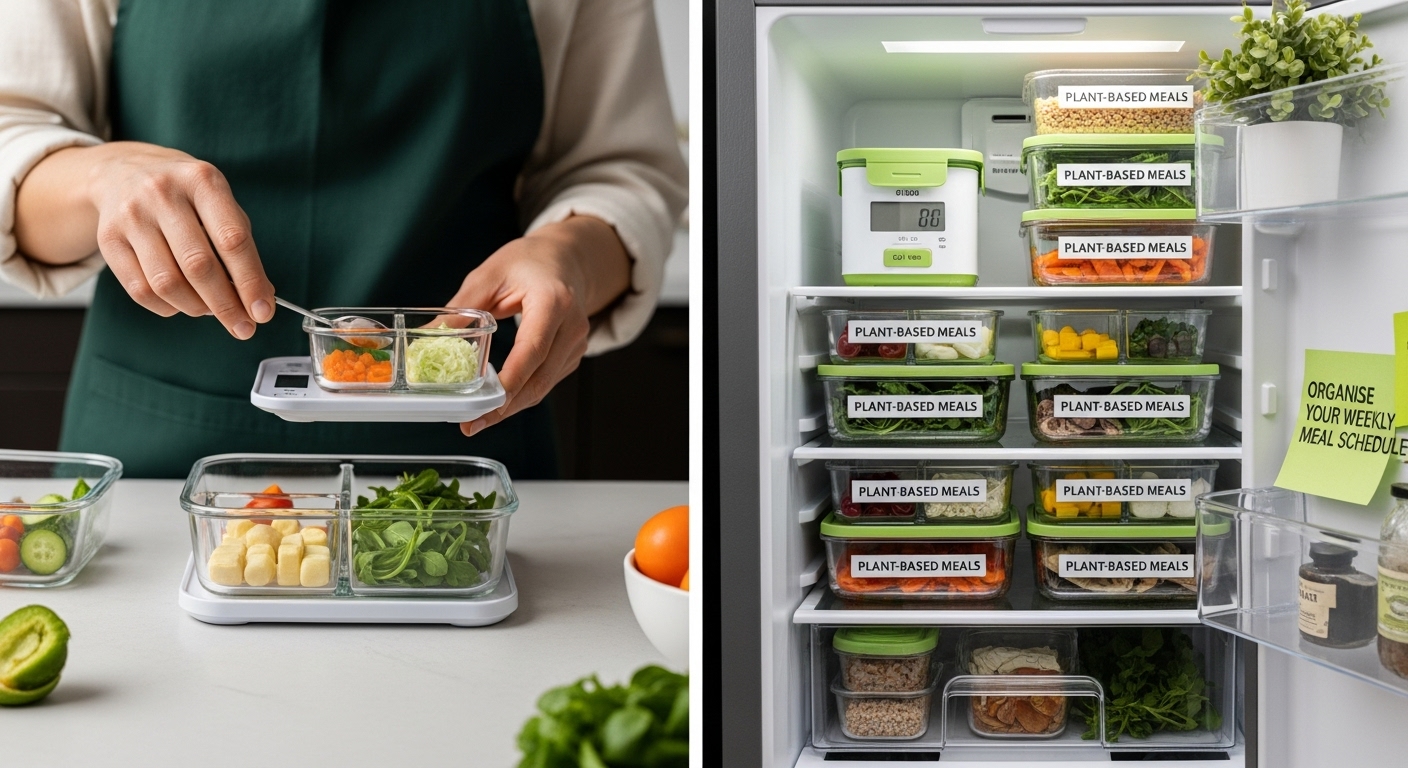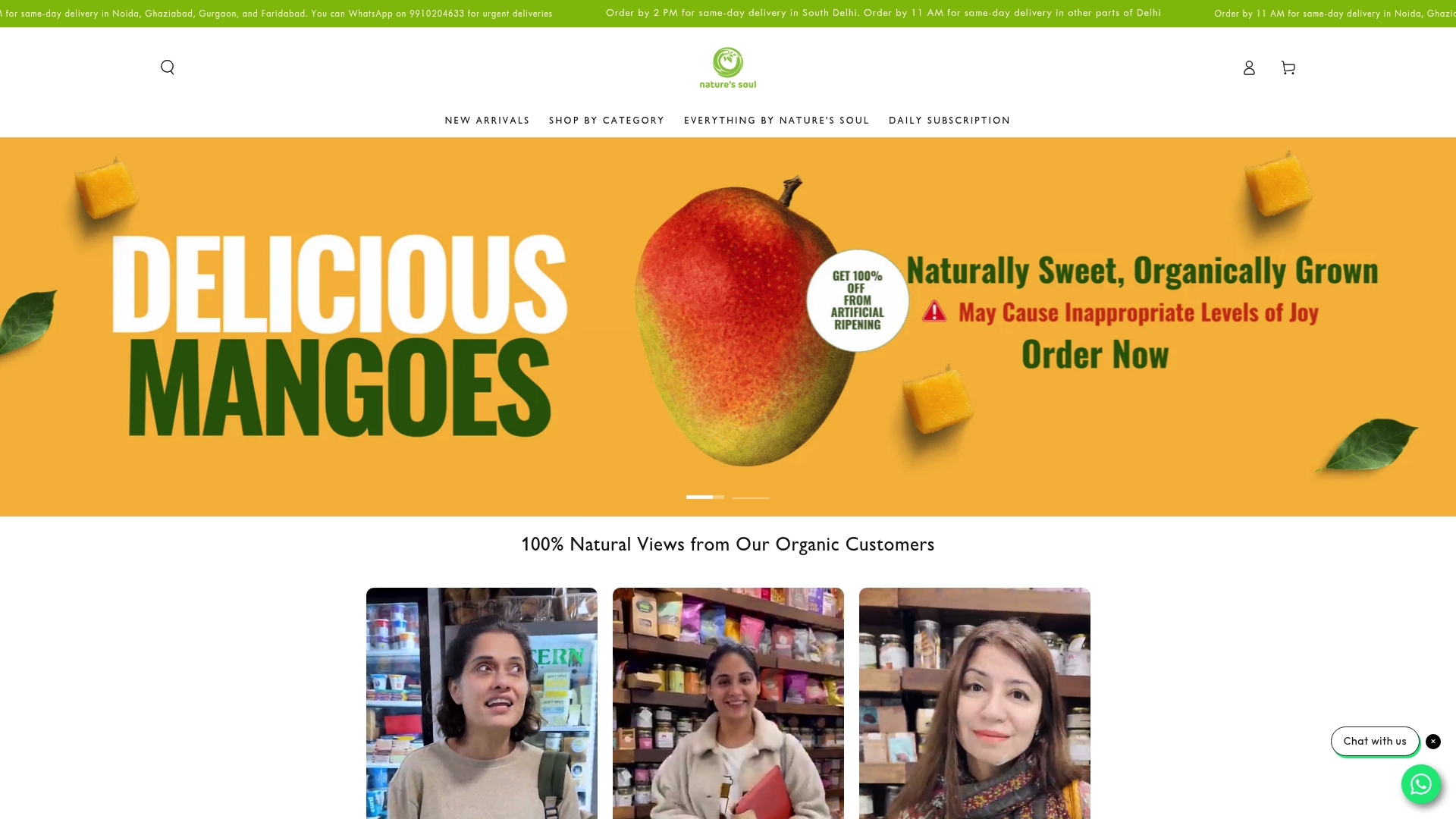Vegan meal prepping often feels like a puzzle with too many moving pieces. Yet studies show that meal planning can reduce food waste by up to 50 percent and help people meet their nutritional goals more consistently. The surprising part is you do not need complicated recipes or expensive gadgets to make it work. The real secret lies in a few simple strategies that transform the whole experience into something far more enjoyable and manageable.
Table of Contents
- Step 1: Gather Essential Ingredients And Tools
- Step 2: Plan Balanced Vegan Meals For The Week
- Step 3: Cook And Portion Ingredients Effectively
- Step 4: Store Meals Properly For Freshness
- Step 5: Organise Your Weekly Meal Schedule
Quick Summary
| Key Point | Explanation |
|---|---|
| 1. Stock a versatile vegan pantry | Focus on whole foods like legumes, grains, and vegetables for diverse meal options and balanced nutrition. |
| 2. Invest in essential kitchen tools | Quality tools like glass containers, a chef’s knife, and a food processor enhance the efficiency and enjoyment of meal prep. |
| 3. Plan diverse and balanced meals | Create a weekly menu with varied proteins and cooking methods to ensure nutritional adequacy and prevent monotony. |
| 4. Master batch cooking techniques | Prepare base ingredients in large quantities to quickly assemble meals throughout the week, saving time and effort. |
| 5. Practice effective storage methods | Use airtight glass containers and proper temperature management to maintain meal freshness and prevent food waste. |
Step 1: Gather Essential Ingredients and Tools
Successful vegan meal prepping begins with strategic ingredient selection and smart kitchen equipment preparation. This crucial first step transforms your meal preparation from a potential challenge into an efficient, enjoyable process that sets you up for plant-based culinary success.
Essential Pantry Foundations
Building a robust vegan pantry requires thoughtful consideration of nutritional balance and ingredient versatility. Harvard School of Public Health recommends focusing on whole food groups that provide comprehensive nutrition. Start by stocking your kitchen with foundational ingredients that form the backbone of numerous vegan recipes.
Your core pantry essentials should include protein-rich staples like dried or canned legumes quinoa, lentils, and beans. These ingredients provide substantial protein and can be transformed into multiple dishes throughout the week. Whole grains such as brown rice, millet, and buckwheat offer additional nutritional diversity and serve as excellent meal bases.
Kitchen Tools for Efficient Meal Preparation
Equipping yourself with the right kitchen tools dramatically streamlines your vegan meal prep process. Invest in high-quality, multipurpose equipment that supports efficient cooking and storage. Essential tools include:
- Large glass storage containers with secure lids
- Quality chef’s knife for precise vegetable preparation
- Cutting boards dedicated to different food groups
- Food processor for quick chopping and blending
- High-speed blender for smoothies and sauces
- Steamer basket for healthy vegetable cooking
- Measuring cups and kitchen scale for portion control
Consider your personal cooking style and meal complexity when selecting tools. Some home cooks prefer minimalist approaches, while others enjoy more specialized equipment. The key is selecting tools that make your meal preparation process smoother and more enjoyable.
Preparing your ingredients and workspace before beginning meal prep creates a foundation for consistent, stress-free cooking. By carefully selecting versatile ingredients and investing in reliable kitchen tools, you transform meal preparation from a potential chore into an enjoyable, creative process that supports your nutritional goals.
Below is a summary table of essential vegan pantry items and core kitchen tools, along with their primary roles in meal prep efficiency and nutrition.
| Item | Category | Primary Purpose |
|---|---|---|
| Dried or canned legumes | Pantry Essential | Protein base for a variety of dishes |
| Quinoa, lentils, beans | Pantry Essential | Versatile, protein-rich meal base |
| Whole grains (brown rice etc) | Pantry Essential | Nutritional variety and meal base |
| Large glass containers | Kitchen Tool | Reliable food storage and meal freshness |
| Chef’s knife | Kitchen Tool | Precise vegetable and ingredient preparation |
| Food processor | Kitchen Tool | Quick chopping and blending for sauces or bases |
| Steamer basket | Kitchen Tool | Healthy cooking of vegetables while retaining nutrients |
| Measuring cups/kitchen scale | Kitchen Tool | Accurate portion control for balanced nutrition |

Step 2: Plan Balanced Vegan Meals for the Week
Effective meal planning transforms vegan meal prepping from a potential challenge into a streamlined, enjoyable process. This critical step ensures nutritional balance, reduces food waste, and provides structure to your weekly eating strategy. Nutrition Research emphasizes the importance of intentional meal planning for maintaining consistent dietary goals.
Begin by creating a comprehensive weekly menu that encompasses diverse nutrients and prevents dietary monotony. Protein diversity stands as the cornerstone of successful vegan meal planning. Rotate through protein sources like legumes, tofu, tempeh, seitan, and various nuts and seeds to ensure complete amino acid profiles. This approach prevents nutritional deficiencies and keeps meals interesting.
Consider your personal schedule when developing your meal plan. Some individuals prefer preparing entire meals in advance, while others might opt for preparing core components that can be quickly assembled. Learn more about healthy eating strategies to complement your vegan meal preparation approach.
A strategic meal plan incorporates variety across multiple dimensions. Think about color, texture, cooking methods, and cultural inspirations. Your weekly menu might include a Mediterranean-inspired chickpea stew, an Asian tofu stir-fry, a Mexican black bean bowl, and an Indian lentil curry. This approach prevents palate fatigue and ensures a broad spectrum of nutrients.
Nutritional Mapping Strategies
Create a simple tracking system to monitor your nutritional intake. Include categories for:
- Protein sources
- Complex carbohydrates
- Healthy fats
- Micronutrient-rich vegetables
- Seasonal fruits
Utilize digital tools or a dedicated notebook to map out your meals.
This table outlines a sample framework for balanced vegan meal planning, providing examples of core food categories and typical ingredient options to ensure variety and nutrition throughout the week.
| Food Category | Example Ingredients | Role in Weekly Meal Plan |
|---|---|---|
| Protein Sources | Legumes, tofu, tempeh, nuts | Foundation for amino acid diversity |
| Complex Carbohydrates | Brown rice, millet, quinoa | Sustained energy and fibre |
| Healthy Fats | Seeds, avocado, olive oil | Supports satiety and nutrient absorption |
| Micronutrient Veg | Leafy greens, peppers, kale | Vitamin/mineral intake and colour variety |
| Seasonal Fruits | Apples, berries, oranges | Freshness, flavour and nutritional boost |
Remember that successful meal planning is an evolving skill. Your first attempts might not be perfect, and that is completely normal. Pay attention to your body’s responses, energy levels, and satisfaction with different meal combinations. Adjust your approach continuously, treating meal planning as a dynamic, personalized process rather than a rigid set of rules.
Step 3: Cook and Portion Ingredients Effectively
Transforming your carefully planned vegan ingredients into delicious, nutritionally balanced meals requires strategic cooking and precise portioning techniques. Journal of Nutrition Research highlights the critical role of proper food preparation in maintaining nutrient integrity and maximizing dietary benefits.
Batch Cooking Fundamentals
Batch cooking represents the cornerstone of efficient vegan meal preparation.
Focus on cooking versatile base ingredients that can be easily transformed into multiple dishes throughout the week. Grains like quinoa, brown rice, and millet serve as excellent foundations. Cook these in large quantities using a rice cooker or instant pot, which allows you to prepare substantial volumes with minimal supervision.
Protein sources demand careful attention during preparation. Legumes such as chickpeas, black beans, and lentils benefit from thorough cooking and seasoning. Consider preparing multiple protein variations simultaneously: roasted chickpeas with Mediterranean spices, spicy black bean mix, and plain boiled lentils that can be easily customised in different recipes. Learn more about healthy eating strategies to enhance your meal preparation techniques.
Portioning and Storage Techniques
Precise portioning prevents food waste and supports consistent nutrition. Invest in a digital kitchen scale and high-quality glass storage containers with secure, airtight lids. When portioning meals, consider your individual nutritional requirements and activity levels. A standard approach involves creating:
- Protein portion: Approximately 100-130 grams per meal
- Complex carbohydrate portion: 1/2 to 3/4 cup cooked grains
- Vegetable portion: Minimum 1-2 cups of mixed vegetables
- Healthy fat portion: 1-2 tablespoons of nuts, seeds, or avocado
Utilise a colour-coded or numbered container system to track meal variety and ensure you are consuming a diverse range of nutrients. Some meal preppers prefer preparing five identical meals, while others create subtle variations to prevent culinary monotony.
Maintain strict food safety protocols during cooking and storage. Cool cooked ingredients completely before transferring to containers, and store meals at appropriate temperatures. Most prepared vegan meals remain fresh for 4-5 days when refrigerated properly, allowing you to create a week’s worth of nutritious meals in a single dedicated cooking session.
Step 4: Store Meals Properly for Freshness
Proper storage transforms your carefully prepared vegan meals from potential food waste into convenient, nutritious sustenance. Food Safety Guidelines emphasize the critical role of appropriate storage techniques in maintaining meal quality and preventing bacterial growth.
Container Selection and Storage Strategies
Invest in high-quality storage containers that protect your meals and support easy reheating. Glass containers with secure, airtight lids offer the best preservation method for vegan meals. These containers prevent moisture loss, maintain ingredient integrity, and eliminate potential chemical leaching associated with plastic alternatives. Look for containers with compartments that allow you to separate different components of your meal, keeping crisp ingredients from becoming soggy.
Temperature management plays a crucial role in meal preservation. Most prepared vegan meals maintain optimal quality when stored between 0-4 degrees Celsius. Divide your meal prep into immediate consumption and freezer-friendly portions. Learn more about healthy eating strategies to enhance your food storage approach.
Meal Preservation Techniques
Different ingredients require unique storage approaches. Leafy greens and fresh vegetables benefit from slightly damp paper towels to maintain moisture, while grains and legumes should be stored in completely dry conditions. Create a systematic approach to your refrigerator organisation:
- Store meals in clear containers for easy identification
- Label each container with preparation date
- Place newer meals at the back, older meals at the front
- Keep raw ingredients separate from prepared meals
- Use transparent containers to quickly assess meal contents
Consider the freezing potential of your prepared meals. Some vegan dishes freeze exceptionally well, while others lose texture and nutritional quality. Grain-based meals, bean stews, and most curry preparations typically freeze successfully for up to one month. Avoid freezing meals containing fresh salads, crisp vegetables, or delicate herbs, as these ingredients will lose their texture and nutritional value.
Implement a meal rotation system that ensures you consume prepared meals within their optimal freshness window. Most vegan meal preps remain at peak quality for 4-5 days when refrigerated properly. Develop a habit of checking your stored meals daily, discarding any items showing signs of spoilage or unusual odours. This approach minimises food waste and supports consistent, healthy eating habits.
Step 5: Organise Your Weekly Meal Schedule
Successful vegan meal prepping transcends mere cooking techniques and hinges on strategic weekly organisation. Nutrition Planning Research demonstrates that structured meal scheduling significantly improves dietary consistency and nutritional intake.
Creating Your Personalised Meal Framework
Develop a flexible meal schedule that accommodates your individual lifestyle and energy requirements. Start by mapping out your weekly commitments, identifying periods of higher activity and potential time constraints. Adaptability becomes your greatest asset in maintaining a sustainable vegan meal prep routine. Some individuals prefer preparing complete meals in advance, while others might opt for preparing versatile base ingredients that can be quickly assembled into different dishes.
Learn more about healthy eating strategies to enhance your meal planning approach and create a more intuitive nutritional framework.
Strategic Meal Distribution Techniques
Consider your personal energy cycles and nutritional needs when distributing meals throughout the week. Breakfast might require lighter, more easily digestible options, while dinner could demand more substantial, protein-rich preparations. Create a meal rotation that prevents monotony and supports consistent nutritional intake.
Establish a systematic approach to meal scheduling that includes:
- Designated meal prep day (typically weekend)
- Specific storage and labelling system
- Flexibility points for unexpected schedule changes
- Balanced nutritional distribution across meals
- Contingency meals for busy days
Utilise digital tools or a dedicated meal planning notebook to track your weekly menu. Some individuals prefer creating a master list of 10-15 reliable recipes that can be mixed and matched, reducing decision fatigue and streamlining preparation. Your meal schedule should feel like a supportive framework rather than a restrictive system.
Remember that successful meal scheduling is an iterative process. Pay attention to your body’s responses, energy levels, and satisfaction with different meal combinations. Be prepared to adjust your approach continuously, treating meal organisation as a dynamic, personalised strategy that evolves with your lifestyle and nutritional requirements. Approach your vegan meal prep with curiosity and flexibility, viewing each week as an opportunity to refine your nutritional approach.

Want Effortless Vegan Meal Prep With Real Results?
Making your weekly vegan meal prep work is rewarding, but it can feel overwhelming without the right ingredients and support. Many readers find it challenging to build a truly balanced, nourishing pantry and choose clean, trusted basics. Struggling to find quality fruits and vegetables, reliable dry groceries, and authentically vegan options can make even the best planning harder. Freshness, clean ingredients and reliable sourcing are core to successful plant-based eating, as highlighted in our article. That is where our holistic wellness selection comes in to help you thrive.

Transform your meal prep this week. Choose from a wide range of organic, natural and vegan essentials handpicked for quality at Natures Soul Shop. Cut out the guesswork and stock up on everything you need for stress-free, healthy meal prep. For inspiration and practical guidance on taking your vegan journey further, explore our easy guide on eating healthy naturally. Make your next plant-based week easier and more enjoyable by visiting our main shop now.
Frequently Asked Questions
How can I build a balanced vegan pantry?
To build a balanced vegan pantry, focus on stocking protein-rich staples like legumes, quinoa, and lentils, along with whole grains such as brown rice and millet. Incorporate a variety of fruits, vegetables, nuts, and seeds to ensure nutritional diversity.
What kitchen tools do I need for vegan meal prepping?
Essential kitchen tools for vegan meal prepping include large glass storage containers, a quality chef’s knife, cutting boards, a food processor, a high-speed blender, a steamer basket, and measuring cups. These tools streamline the cooking and storage process.
How can I effectively plan my vegan meals for the week?
To effectively plan your vegan meals, create a weekly menu that includes a variety of protein sources, grains, and vegetables. Rotate ingredients to prevent monotony, and consider your schedule to either prepare entire meals or core components that can be quickly assembled.
What are some tips for proper storage of meal prepped vegan dishes?
Store your meal prepped vegan dishes in high-quality glass containers with airtight lids. Label each container with the preparation date and keep meals stored at 0-4 degrees Celsius. Different ingredients may require unique storage methods to maintain freshness and quality.
Recommended
- How to Start Eating Healthy: A Simple Step-by-Step Guide – naturessoulshop
- Understanding What Are Clean Ingredients and Their Benefits – naturessoulshop
- 7 Essential Tips for Choosing Organic Gluten Free Foods – naturessoulshop
- Nature’s Soul Shop: Online Organic Food and Grocery Store – naturessoulshop
- 7 Vegan Meals High in Protein for a Healthy Diet – Granavitalis
- 7 Delicious Examples of Vegan Thai Dishes






